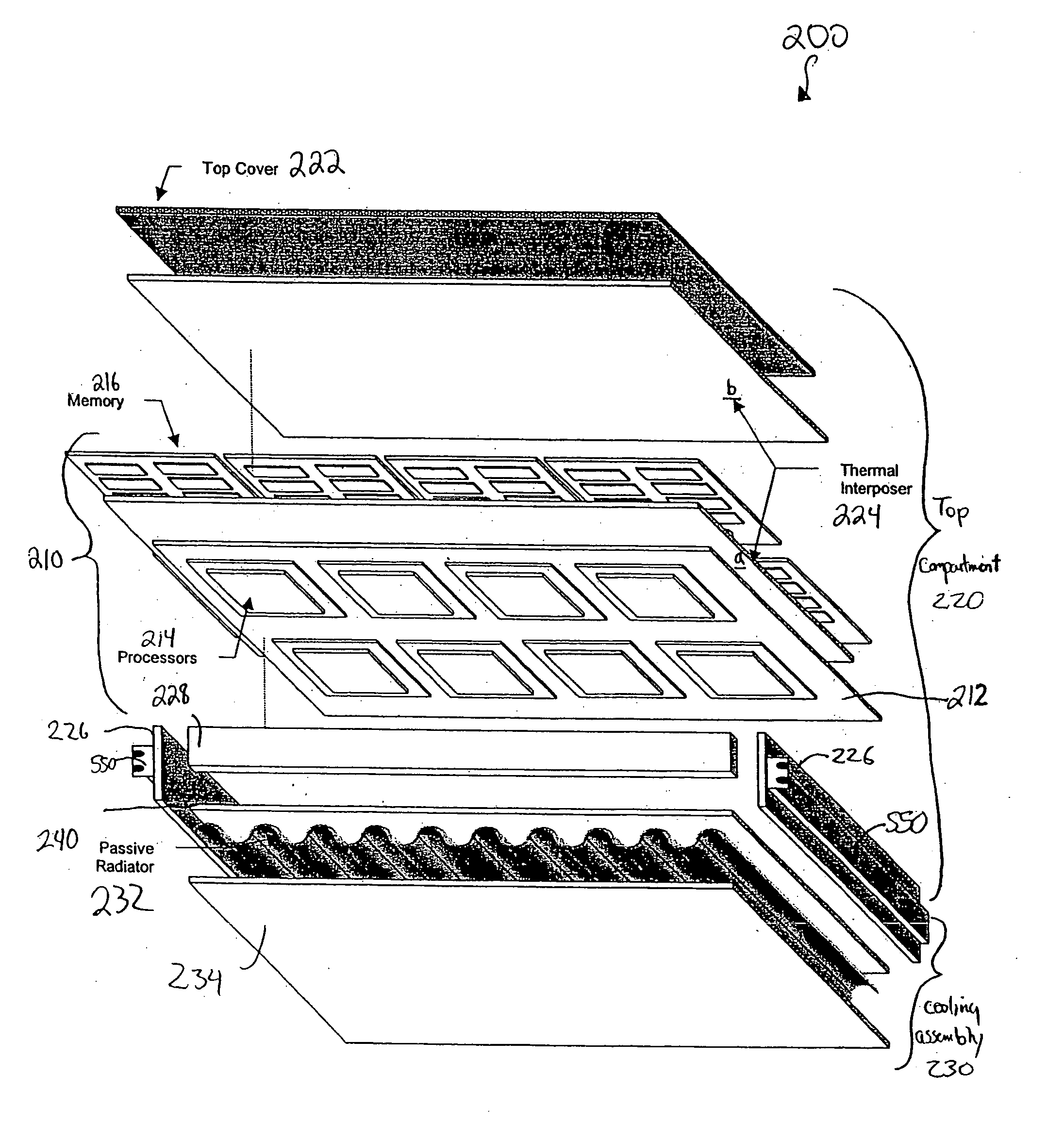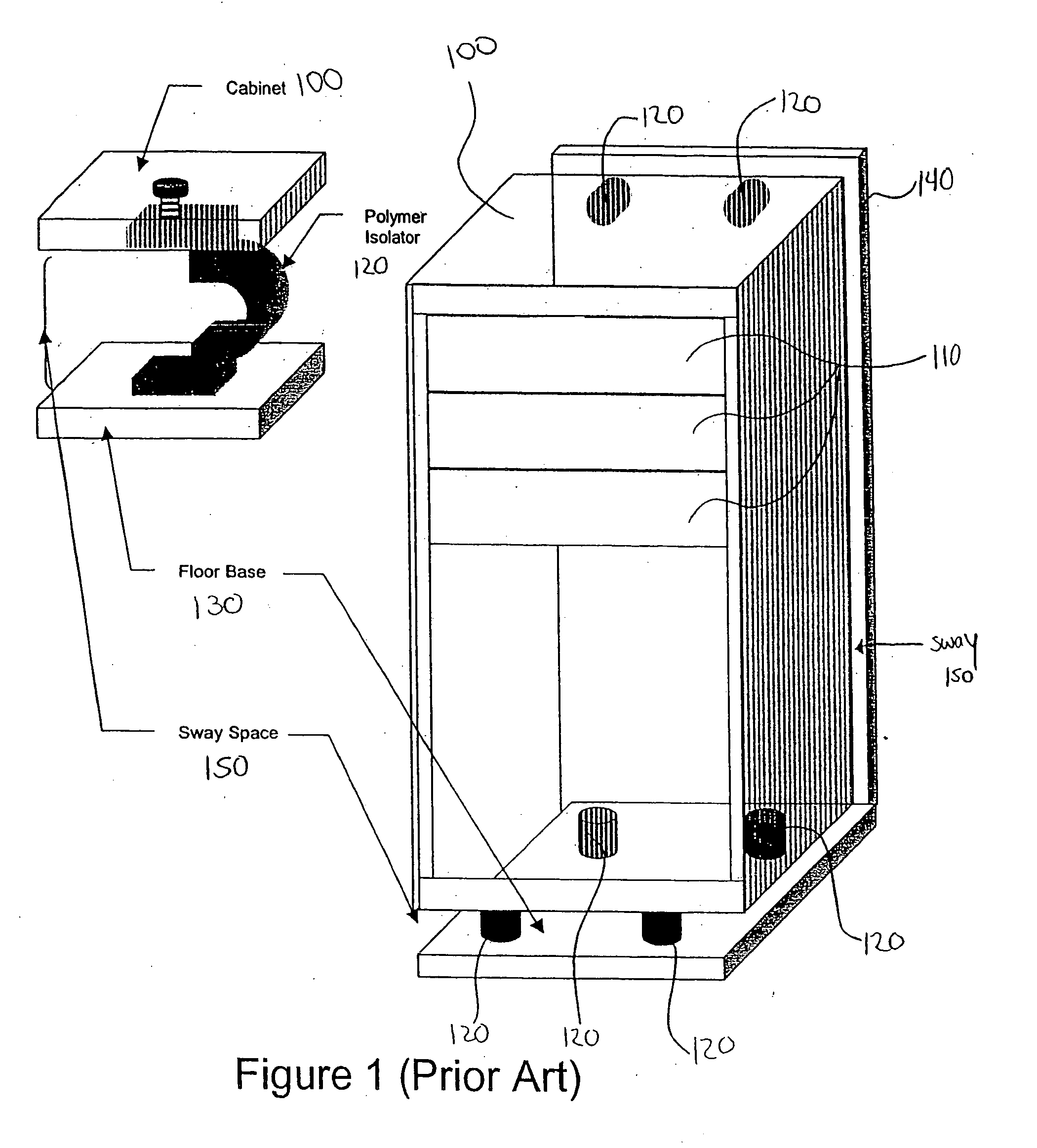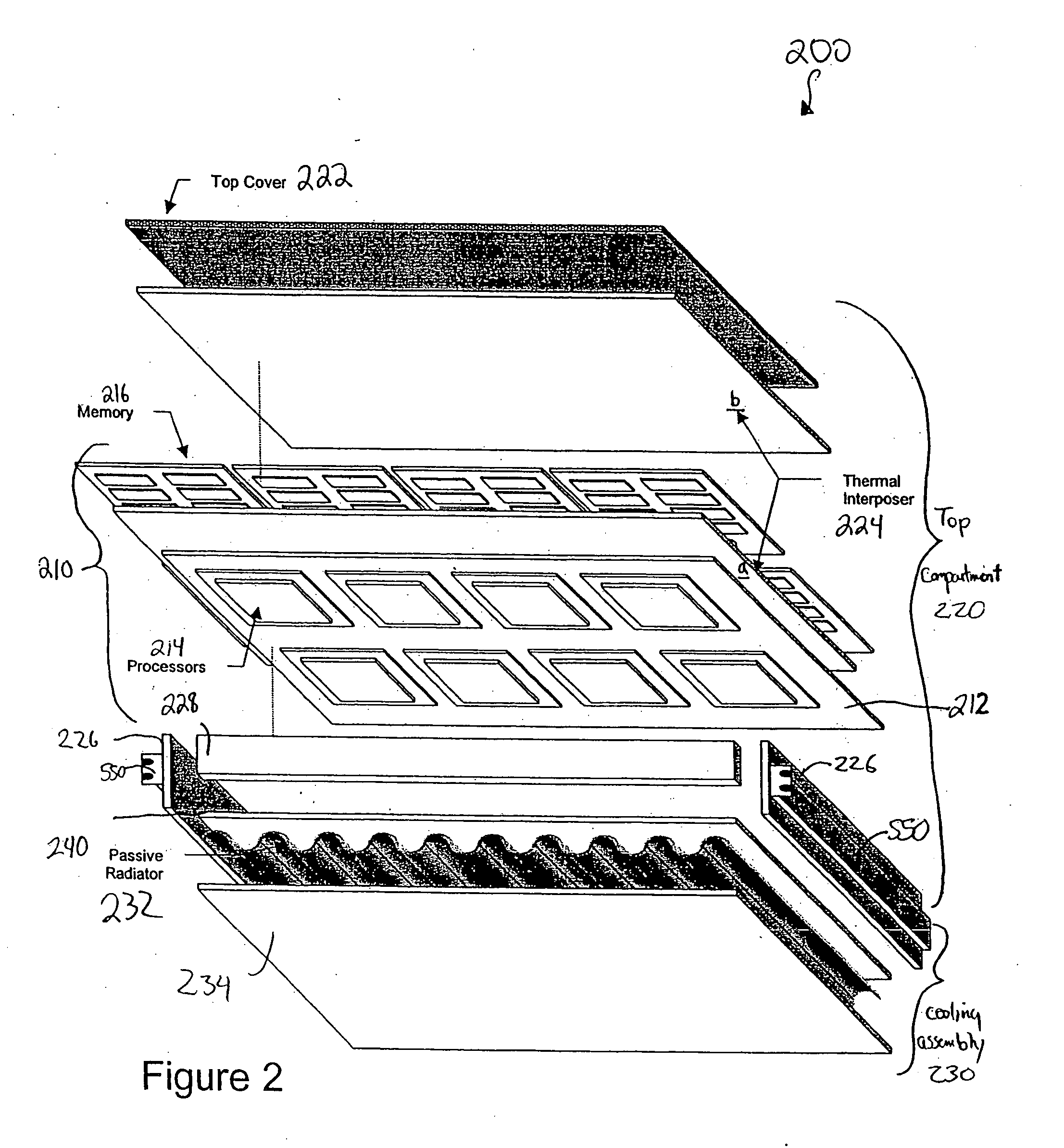Ruggedized electronics enclosure
a technology of electronics enclosures and enclosures, applied in the direction of cooling/ventilation/heating modifications, printed circuit board receptacles, modifications by conduction heat transfer, etc., can solve the problems of difficult if not impossible upgrade to the latest technology, custom equipment is often significantly more expensive than commercial systems, and cot systems
- Summary
- Abstract
- Description
- Claims
- Application Information
AI Technical Summary
Benefits of technology
Problems solved by technology
Method used
Image
Examples
Embodiment Construction
[0033] A preferred embodiment of the present invention is now described with reference to the figures where like reference numbers indicate identical or functionally similar elements. Also in the figures, the left most digit(s) of each reference number correspond(s) to the figure in which the reference number is first used.
[0034] The present invention relates to a ruggedized electronics enclosure for protecting electronic circuits that must be able to survive and operate under harsh conditions such as those in military and automotive environments. The enclosure must be able to protect the electronic circuits from severe vibration and shock, heat, moisture, dust particulate, and various other adverse conditions. Throughout this description, the word “destructive” will be used to indicate a force or event which may cause the enclosure or the electronic circuit to fail after a single occurrence of the event, or after repeated occurrences of the event between maintenance intervals. Spe...
PUM
 Login to View More
Login to View More Abstract
Description
Claims
Application Information
 Login to View More
Login to View More - R&D
- Intellectual Property
- Life Sciences
- Materials
- Tech Scout
- Unparalleled Data Quality
- Higher Quality Content
- 60% Fewer Hallucinations
Browse by: Latest US Patents, China's latest patents, Technical Efficacy Thesaurus, Application Domain, Technology Topic, Popular Technical Reports.
© 2025 PatSnap. All rights reserved.Legal|Privacy policy|Modern Slavery Act Transparency Statement|Sitemap|About US| Contact US: help@patsnap.com



